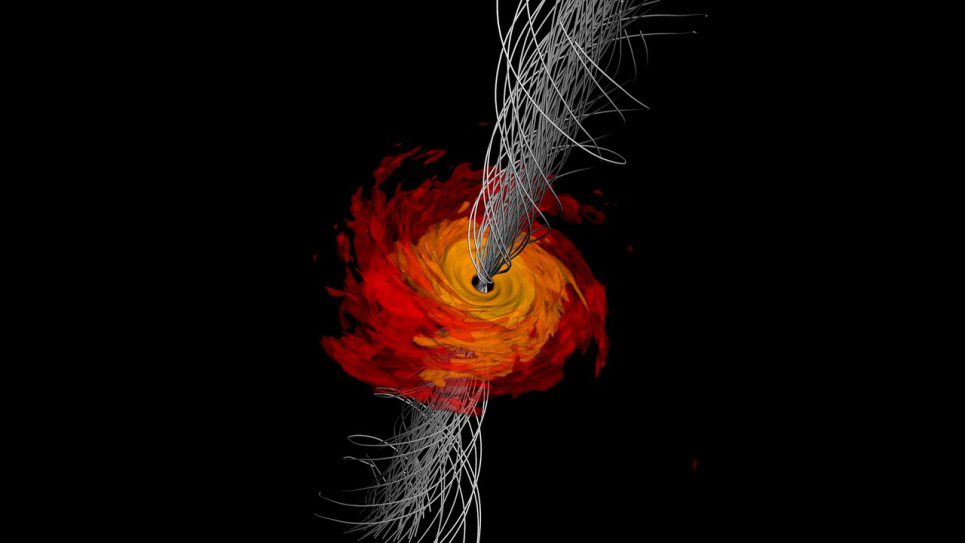
Structure of a turbulent accretion disk formed by matter falling into a spinning black hole. Colors show isosurfaces of the density, while filaments show magnetic field lines that pass near the horizon. General relativistic effects spin the field lines into a helical pattern and drive a powerful relativistic jet. Calculations performed as part of this INCITE project will study the structure and dynamics of intense radiation fields produced in such disks. Image: Patrick Mullen and James Stone, Institute for Advanced Study.